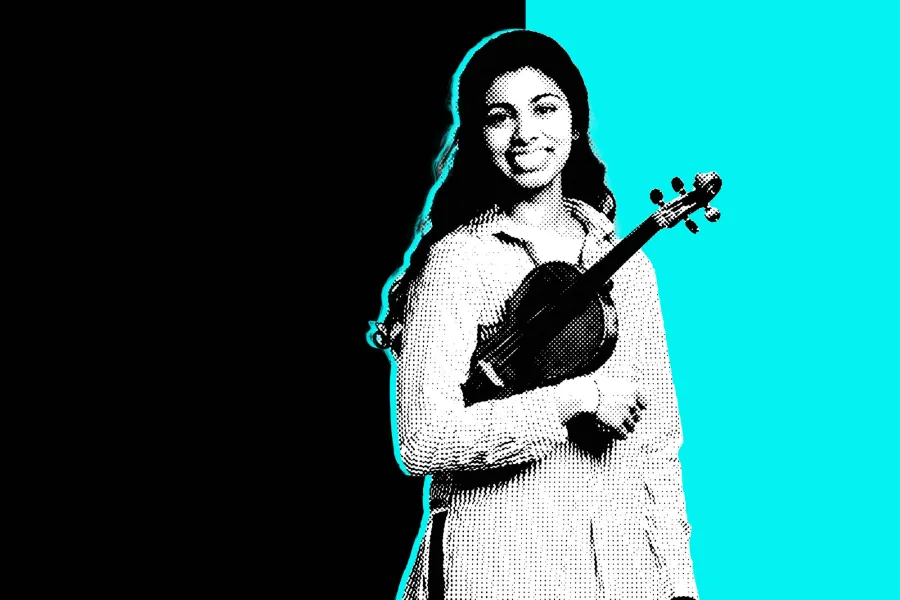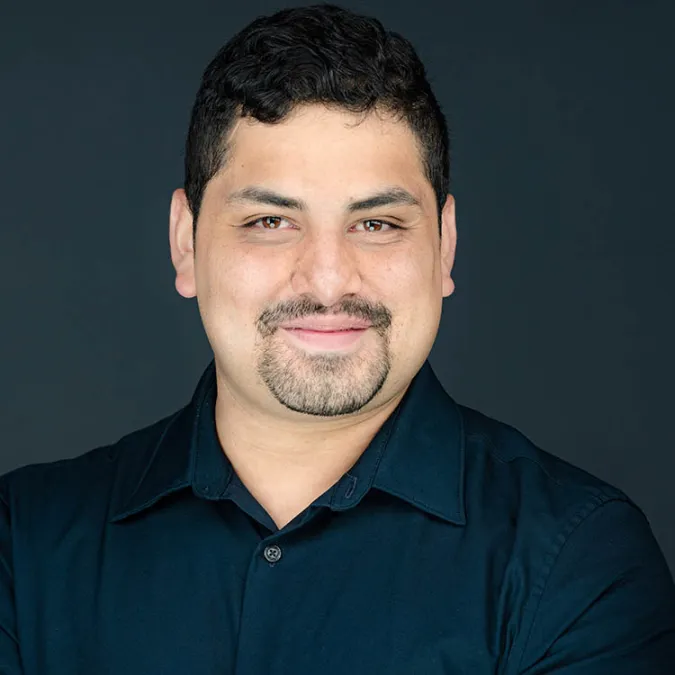
Chris Tran, conductor
Matthew Pavon, conductor
This concert will last about 75 minutes with one intermission.
Please silence your electronic devices.
Photography, video, or recording of any part of this performance is prohibited
Program
Ludwig van Beethoven
Symphony No. 1 in C Major, Op. 21
Adagio molto – Allegro con brio
Andante cantabile con moto
Menuetto: Allegro molto e vivace
Finale: Adagio – Allegro molto e vivace
Chris Tran, conductor
intermission
Florence Price
Symphony No. 3 in C Minor
Andante; Allegro
Andante ma non troppo
Juba: Allegro
Scherzo: Finale
Matthew Pavon, conductor
About the Program
Program notes by Mark Bilyeu
Ludwig van Beethoven
Symphony No. 1, in C Major, Op.21
Born December 16, 1770, Bonn, Germany
Died March 26, 1827, Vienna, Austria.
Composed 1799-1800
Premiered April 2, 1800, Burgtheater, Vienna Austria
Duration 30 minutes
As a 22-year-old, Beethoven decided to move from Bonn to Vienna, to study with Franz Joseph Haydn. By this point, Haydn had already garnered the moniker of “Papa Haydn” as both a term of endearment and an honorific for his musical contributions: primarily his commitment to the string quartet and the symphony. Famously, the two composers didn’t exactly vibe: Haydn’s own career often took him away from Vienna, forcing Beethoven to begin (secretly) studying with other teachers. The final straw was Haydn’s non-effusive comments about a set of trios Beethoven wrote, which left the student hurt, causing him to end their mentor-mentee relationship. Although they were friends until Haydn’s death, Beethoven is quoted as saying "I never learned anything from Haydn." It took another seven years after his lessons with Papa Haydn before Beethoven would muster the courage to write his first symphony: five years after Haydn's last symphony and twelve years after Mozart's final “Jupiter” Symphony. The result is a work that pays homage to Beethoven’s teachers, but immediately says “Listen up!” with its opening chords that are nowhere near the tonal center. The second movement radically included the timpani, and despite the third movement’s title of “Menuetto,” the tempo is decidedly a scherzo which modulates keys from C-major to D-flat-major in a matter of seconds. The final movement opens with all the hesitation of a woodland creature cautiously emerging from the safety of its home, before joyfully romping through the trees with the abandon of an animal twice its size. The symphony premiered at a concert put on by Beethoven himself, meant to introduce himself to the Viennese public. The concert featured: a symphony by Mozart, excerpts from Haydn’s oratorio The Creation (so he couldn’t have been too upset with his former teacher!), his own improvisation, one of his first two piano concertos (it’s unclear which one), the premiere of his Septet, and “a new Grand Symphony with full orchestra.” The event was at every turn a major success. The press was ectatic; the Allgemeine musikalische Zeitung wrote “this proved to be the most interesting concert we have had in a long time…and at the end we had a symphony of [Beethoven’s] own composition that displayed great artistry, innovation, and a wealth of ideas,” while another critic called the symphony “a masterpiece that does equal honor to [Beethoven’s] inventiveness and his musical knowledge. Being just as beautiful and distinguished in its design as its execution, there prevails in it such a clear and lucid order, such a flow of the most pleasant melodies, and such a rich, but at the same time never wearisome, instrumentation that this symphony can justly be placed next to Mozart’s and Haydn’s.” Even the Holy Roman Emperor Francis II was there, saying “There is something revolutionary in that music!” For Beethoven and his symphonies, the revolution was just beginning.
Florence Price
Symphony No. 3 in C Minor
Born April 9, 1887, Little Rock, Arkansas
Died June 3, 1953, Chicago, Illinois
Composed 1938, revised 1940
Premiered November 6, 1940, Detroit Institute of Arts, Michigan WPA Symphony Orchestra, Valter Poole, conductor
Duration 30 minutes
“My dear Dr. Koussevitzky, To begin with I have two handicaps—those of sex and race. I am a woman; and I have some Negro blood in my veins.” This was the opening line written by Florence Price in a 1943 letter to the highly influential conductor Serge Koussevitzky. She went on to write: “Knowing the worst, then, would you be good enough to hold in check the possible inclination to regard a woman’s composition as long on emotionalism but short on virility and thought content; until you shall have examined some of my work? ... As to the handicap of race, ... I should like to be judged on merit alone—the great trouble having been to get conductors, who know nothing of my work ... to even consent to examine a score.” Koussevitzky never replied.The letter came ten years after the Chicago Symphony Orchestra performed her Symphony in E minor at the 1933 Chicago World’s Fair, earning her the distinction of being the first African-American woman to have her music performed by a major symphony orchestra, and two years after her Symphony No. 3 was premiered in Detroit. Yet, despite her achievements (consider the number of white male composers whose music has not been heard in public at all!), this demonstrably great symphonist struggled to gain a foothold. Born in Arkansas, Price attended the New England Conservatory—one of the few schools which accepted African American students—and returned to Arkansas where she taught at the university level. Concerned with the escalating racial tensions under Jim Crow, she and her family moved to Chicago in 1927, where Price’s career flourished. After a divorce from her husband, she moved in with composer Margaret Bonds, which led to relationships with other influential Black artists of the day including Marian Anderson, Roland Hayes, and Langston Hughes. In a 1940 letter, Price described her third symphony as “Negroid in character and expression” but differentiated it from her first symphony, which utilized and often quoted many Spirituals, by saying her new symphony was “a cross section of present-day Negro life and thought with its heritage of that which is past, paralleled or influenced by concepts of the present day.” The premiere earned near-instant critical acclaim. First Lady Eleanor Roosevelt reported enthusiastically on the work in her syndicated newspaper column, My Day, and the Detroit Free Press published a positive review that is simply too steeped in stereotypes to be published here. As critic and author Alex Ross writes, despite an impressive output of over 300 works, “[Price] is mentioned more often than she is heard,” a fact which is only now beginning to be remedied.
About the Artists
Chris Tran

Chris Tran is Co-Director of the University of Texas University Orchestra, Graduate Teaching Assistant for the University of Texas Orchestras, and is currently pursuing a Doctor of Musical Arts in Orchestral Conducting with Farkhad Khudyev at the University of Texas at Austin. Mr. Tran has been an invited conductor at several masterclasses and workshops in Boulder, Los Angeles, Eugene, St. Andrews (Scotland), as well as the Cabrillo Festival of Contemporary Music with Cristian Măcelaru, Thomas Sleeper, and Leonard Slatkin, and the International Conducting Workshop and Festival with the late Larry Rachleff and Donald Schleicher. He has also worked with conductors Neil Thomson, Jeff Grogan, and Sian Edwards. Mr. Tran earned a Master of Music in Orchestral Conducting from the University of Colorado Boulder with Gary Lewis, and a Bachelor of Music in Music Education from Southern Methodist University. His conducting mentors include Nicholas Carthy and Paul Phillips. He studied violin with Charles Wetherbee, former concertmaster of the Boulder Philharmonic, and Diane Kitzman, former Principal Violin of the Dallas Symphony.
Matthew Pavon

Matthew Pavon is a conductor and violist studying for a master's in music for Orchestral Conducting under Farkhad Khudyev at the Butler School of Music. In his role as Teaching Assistant for University Orchestras, Matthew assists in conducting and administrating the University Symphony Orchestra and Co-Directs the University Orchestra. Matthew has served as the Graduate Conductor of the Missouri State University Orchestra. Upon receiving his M.M. in viola performance, he continued as the Assistant Conductor for Missouri State University from 2022 to 2023. His guest conducting appearances have included concerts with ensembles like the Kansas City Civic Orchestra, the Missouri Philharmonic, and the Drury University Orchestra. A strong believer in supporting the arts in his communities, Matthew is the founder and former artistic director of the Galloway Chamber Orchestra in Springfield, MO. He is also currently the workshop conductor for the Youth Symphony of Kansas City. Matthew lives in Austin, TX with his wife, Leianna, and their mini-Australian Shepherds, Koda and Ellie.
University Orchestra
Violin I
Felipe Benitez, concertmaster
Sophia Louie
Lucy Hamre
Jessica Lin
Thomas Feng
Emma Wang
Peter Song
Jasmine Chou
Danny Pan
Adriana Rizk
Eric Liang
Mohini Bhave
Jonathan Li
Violin II
Kylie Hung, principal
John Neary
Peter Stone
Angelica Sharma
Cannon Bates
Jailyn Barnuevo
Parker Allen
Sophia San Miguel
Leiana Campanaro
Ximena Cazares
Lauren Kim
Jacob Hanson
Paige Landry
Sonya Shah
Viola
Amy Ning, principal
Edward Visaya
Ash Roberts
Jaela Barrera
Audrey Sohn
Caroline Hughes
Semin Jang
Dilynn Derden
Cello
Andrew Dang, principal
Rei Iwahara
Zachary Houlton
Anthony Hermez
Michael Chung
Aarya Patel
Helena Chandy
Yee Hong Pua
Allison Tseng
Domenica Aburto de la Fuente
Daniel Tepedino
Double Bass
Afshaal Zubair, principal
Sulayman Bowles
Brandon Chiu
Emily Layton
Aizza Guerrero
Sullivan Banks-Gilmore
Piccolo
Juan Fajardo
Flute
Kenneth Qu1, 2
Camila Martinez
Michael Hung
Oboe
Noah Bihan1, 2
Katie Gaston
English Horn
Vibha Immedisetty
Clarinet
Boyang Liu1, 2
Jorge Canas
Bass Clarinet
Samuel Shin
Bassoon
Kiera DiCesare2
Daniel Ramirez
Gavin Remo1
Horn
Alex Allen1, 2
Jori Barash
James Williams
Dhanush Jain
Danya Qadan
Trumpet
Christopher Ray2
Brennan White1
Quentin Schaefer
Trombone
Jan Campos1, 2
Jingchun Liu
Bass Trombone
Jackson Quevedo
Tuba
Ajeet Nagi
Timpani
Gage Lagueux
Percussion
Aaryn Avila
Spencer Frismanis
Randy Griner
Philip Kaufinger
Jimmy Santos
Harp
Hannah Kaye
Principals
1 Beethoven
2 Price
Upcoming Events
Symphony Orchestra
Featuring Donnie Ray Albert, baritone
Saturday, March 29, 2025, 7:30 pm
Bates Recital Hall
University Orchestra
Free Admission
Tuesday, April 22, 2025, 7:30 pm
Bates Rectial Hall
Symphony Orchestra
Concerto Competition Winners
Featuring 2 nights of unique programming
Saturday, April 26, 7:30 pm
Monday, April 28, 7:30 pm
Event Details
Free admission

